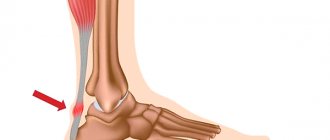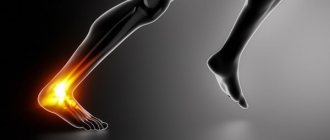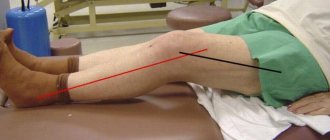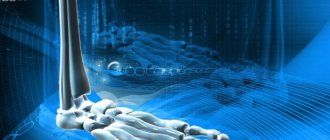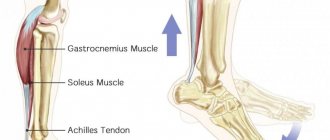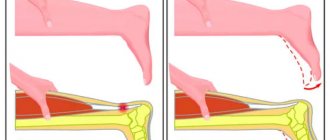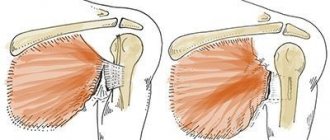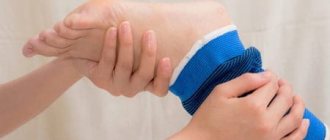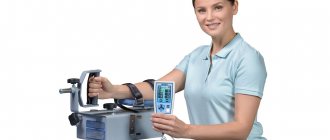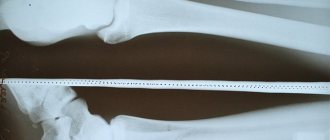Stretching or stretching is an important part of any training process, since without effective stretching of working muscle groups, joints and tendons it is impossible to get a beautiful and healthy body. Stretching techniques are widely used in physical therapy and massage; they have a positive effect on the body. Stretching is suitable for everyone who is allowed general physical activity, but it is advisable to consult a doctor before starting classes.
To avoid sprains and injuries, all exercises should be performed after strength training or a good warm-up of the body. Perform stretching exercises for 30-60 seconds, doing 3-4 approaches.
To reduce stiff muscle resistance and relax, perform exhalation exercises.
Be attentive to how you feel in the gym: if you feel pain in a pulled muscle or tremors, do not increase the pressure; on the contrary, ease the load. It is especially important for men to be careful when stretching; their ligaments are stiffer than those of girls.
When it comes to stretching, a comprehensive approach means a lot. You can’t pull just one thing, in addition to the muscle group that was worked during dynamic training; you should stretch the rest of the muscles in a less active and deep version.
Why is this happening
The main problem of the Achilles is insufficient blood supply, which becomes the main reason for its slow recovery after injury or inflammation. It should be noted that problems with the heel tendon do not arise out of nowhere, they seem to accumulate in it. Day after day, during training, microtraumas and inflammations form on it. However, each of us has our own cup of patience, and the Achilles is no exception in this regard. Quite often, it is inflammation of the Achilles tendon that causes it to rupture.
Is the Achilles tendon a weak point?
The Achilles tendon is one of the main tendons that are responsible for full human movement. Without it, it is impossible to bend the foot and turn it inward - movements that occur when walking. Given the constant daily stress, the Achilles tendon is susceptible to injury and inflammation. They occur especially often (about 6 times more often) in men. Also, people of postmenopausal age are predisposed to diseases and ruptures of the Achilles tendon. Is it possible to protect yourself from the problem and what to do if the Achilles tendon hurts? Read below.
First aid
In this case, the victim should be laid down and the limb should be slightly elevated to prevent its swelling from increasing. An ice pack or, at worst, a wet towel soaked in cold water is applied to the affected area. When transporting the patient, it would be useful to apply a tight bandage to the affected area, which, by limiting the mobility of the joint, will help reduce pain.
The main treatment for heel tendonitis will be to avoid strenuous activity for a period of time.
Anatomy of the Achilles tendon
The developed Achilles tendon is present only in humans and is an evolutionary adaptation to walking upright. It is believed that the human musculoskeletal system has not yet had time to fully adapt to upright walking, so its individual elements experience increased loads.
Although evolutionary selection has given the Achilles tendon high endurance (its breaking force reaches 400 kg) and made it the thickest tendon in the human body, it is nevertheless considered one of the most vulnerable.
The Achilles tendon from above, in its widest and thinnest part, is attached to the fusion of the heads of the triceps muscle (formed by the gastrocnemius and soleus muscles), and from below, tapering at a level of 3-4 cm above the heel bone, it is attached to the calcaneal tubercle.
Due to its anatomical features, the Achilles tendon is responsible for normal supination and pronation of the foot (the main biomechanical processes that occur during human movement). It also provides anatomically correct movement and stability in the knee, ankle and subtalar joints.
The mechanical properties of the Achilles tendon are fully adequate for these tasks: when running, it can withstand loads that are 8 times the weight of the person himself.
Arm and back stretching
Forearm and shoulder stretch: Move one of your arms to the opposite side of your body. The correct thing to do is to try to press your hand as close to your body as possible and feel the tension. Hold the stretch for 10-15 seconds. Repeat on both sides five times.
Triceps stretch: Raise your bent arm with your elbow up and try to reach your shoulder blade with your palm.
You can stretch your triceps by moving your arms back.
Simple bends effectively stretch the entire spine, from the neck to the tailbone. Bend over without bending your knees and reach for your toes. Hold down for 10 seconds, rise up correctly and smoothly and perform the movement 5 times.
Perform the twist while sitting on the floor with your back straight. When making slow turns of the body in both directions, you need to monitor whether there is tension in the sides. When turning, the muscles of the abdomen, back and shoulders are involved. You can help yourself with your hands. Try to feel the pectoral muscles as well, actively expanding your chest. After the body is twisted in one direction, pause for 15-20 seconds, then take the starting position and turn in the other direction.
Exercise to stretch the lower back muscles: Sit on the floor and bring your legs together. Tilt your body, gently rounding your back. Keep your knees on the floor and grab your heels with your hands. Fixation for 30 seconds, then starting position.
Main causes of Achilles tendon injury
There are four groups of causes that can cause Achilles tendon rupture or inflammation. This includes:
- tendon injuries (open and closed);
- inflammatory, metabolic, viral and other diseases that may not directly affect the Achilles (gout, rheumatoid arthritis) or occur in the immediate vicinity of it (heel spur, tendonitis, achilles bursitis);
- congenital problems with the Achilles tendon (its insufficient length from birth and paresis of the foot) or collagen synthesis, constitutional features;
- others (age-related, biochemical, related to patient habits).
The Achilles tendon can become damaged and become painful due to infectious diseases while taking fluoroquinolone antibiotics. Already in the first 48 hours after the start of treatment with them, any high load on it can provoke a rupture of the Achilles tendon.
The tendon can also be damaged due to excess weight, constant wearing of uncomfortable shoes (too tight or high heels). These reasons cause deformation of collagen fibers and reduce their endurance. With a sedentary lifestyle, the load on the Achilles tendon increases. This is due to poor development and shortening of the calf muscles - the “companions” of the Achilles in matters of load distribution.
Age-related changes in the body, which begin after 40 years, cause a decrease in the strength and elasticity of the tendons. Increasing physical activity at this age without prior long-term adaptation can cause inflammation and even rupture of the Achilles tendon. At the same time, the correlation is different for men and women, because The microscopic structure of the tendon is different. The level of estrogen, the female sex hormone that is responsible for the elasticity of ligaments and tendons, also varies. Because men have less of it, their tendons are stiffer and less resistant to jerking loads.
Diseases
The Achilles tendon can hurt due to the following diseases and pathologies:
- heel spur and Haglund's deformity;
- tendinitis and calcification of the tendon due to micro-tears;
- traumatic lesions of the heel and ankle;
- arthritis, arthrosis and other joint diseases (spine, knee, ankle, foot and toes);
- deformations in the musculoskeletal system (for example, flat feet);
- metabolic diseases (diabetes mellitus, gout) and endocrinological problems (ovarian dysfunction and others);
- systemic and autoimmune diseases that affect connective tissue (rheumatoid arthritis, rheumatism);
- systemic and local infections.
Injuries
Injuries to the Achilles tendon are accompanied by its partial or complete rupture, or separation of the tendon from the heel tubercle to which it is attached. Most often, the injury occurs at the start of sprinting, when landing in jumpers or dancers, and also during the game of tennis, volleyball, basketball or football. Particularly conducive to obtaining it:
- too rapid increase in load intensity, to which the musculoskeletal system does not have time to adapt;
- lack of normal warm-up and cool-down before playing sports;
- insufficient development of the calf muscles;
- physical overload;
- sudden jerking loads;
- uncomfortable shoes;
- running and jumping on unsuitable surfaces.
At the time of injury, the patient experiences a sensation of a sharp blow to the back of the ankle, which gradually passes, giving way to pain. A characteristic cracking sound may be heard. Traumatic damage to the Achilles tendon is often accompanied by severe hemorrhage and swelling. You can often feel a “groove” in the area of the rupture. The left leg is most often injured.
With a traumatic rupture of the Achilles tendon, the patient cannot voluntarily bend the sole or rise on the toes, and all attempts are accompanied by severe pain.
First aid for Achilles tendon ruptures involves applying ice and applying a special splint.
Stretching the muscles, ligaments and tendons of the legs
This basic exercise develops a variety of thigh muscles (biceps, quadriceps, etc.), helps to relax tense shoulders, and prepare working muscles, which is especially useful for those who are training in bodybuilding programs.
Stretching is also required after cardio exercise.
Stand straight, place your feet shoulder-width apart. Place your hands behind your back and clasp them together. Slowly tilt your body down, trying to lower your hands behind your head. Pull your chin towards your knees. Relax your neck muscles; if you feel too much muscle tension, lower your hands to your sacrum. Hold the position for 30 seconds and slowly return to the starting position.
The easiest way to train a hamstring stretch is: From a supine position, lift one leg as high as possible, keeping it straight. Grasp your thigh with your hands and smoothly pull your leg toward your head without bending your knee. After 30 seconds, switch legs.
Sit on the floor and straighten your left leg in front of you. Bend the other leg with your foot facing the inside of your left thigh. Trying to keep your back straight and not bend your knee, grab your left foot with your hand. Hold the position for 30 seconds, then change legs.
If you manage to keep your back straight, you will simultaneously stretch your back muscles.
This exercise effectively stretches the ligaments and muscles of the back of the thigh at the same time.
While standing, place your heel on a chair or bench so that it is slightly higher than your knee. Place your hands on your knee and, pressing lightly on it, lower your body. The supporting leg is straight. Stretch in this static position for 30 seconds, then change legs.
Achilles tendon treatment
Conservative treatment of the Achilles tendon is based on pain relief, swelling and resting the affected tissues. The etiology of the problem makes its own adjustments to the treatment strategy. For example, if an x-ray reveals calcification of the Achilles tendon, characteristic of tendonitis, it is recommended to use shock wave therapy, and, if necessary, surgical treatment.
If the Achilles tendon hurts due to injury, local anesthesia (for example, novocaine) and a plaster cast are used. For complete ruptures and avulsions, suturing surgery is always performed.
Symptoms of inflammation and rupture of the Achilles tendon
Early detection of symptoms of rupture or inflammation in the Achilles tendon often helps with outpatient treatment - at home, with periodic consultations with a doctor. And ignoring them can lead to surgery, because constant injury to already deformed collagen fibers can lead to complete rupture of the Achilles tendon. Signs of inflammation in the Achilles tendon are:
- pain when palpating and stepping in the heel area, which intensifies after physical activity and subsides during rest;
- swelling of the ankle;
- redness and heated skin on the back of the ankle;
- crunching and pain when trying to rotate the foot;
- deterioration of plantar mobility;
- noticeable tendon stiffness, loss of normal stretching ability;
- difficulties when climbing stairs, jumping, rising on toes.
A ruptured Achilles tendon is accompanied by the following symptoms:
- swelling in the ankle joint with “retraction” at the site of the rupture;
- sharp pain, especially when trying to stand on your heel or toe;
- severe difficulty walking.
